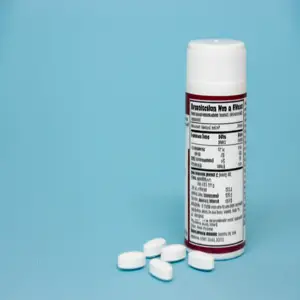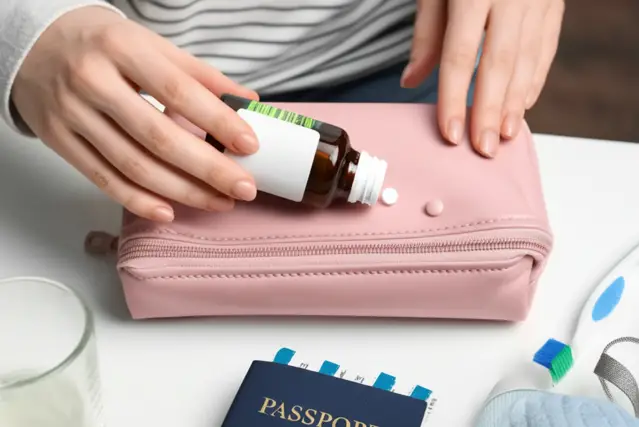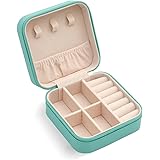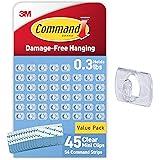Traveling can be stressful, and adjusting to new time zones often throws your sleep schedule into disarray. Many travelers turn to melatonin to help regulate their sleep cycle, but a common question arises: “Can I bring melatonin on a plane?” This comprehensive guide provides the most up-to-date information for 2024, covering regulations, dosage recommendations, travel tips, and frequently asked questions about traveling with melatonin, both domestically and internationally. We aim to give you all the info to decide if bringing melatonin on your trip is the right choice for you and to guide you in doing so safely and legally.
Introduction: Melatonin and Air Travel – A Sleepless Traveler’s Friend?
Melatonin, a naturally occurring hormone, plays a crucial role in regulating the sleep-wake cycle. It’s become a popular over-the-counter supplement for individuals struggling with insomnia, jet lag, or simply seeking a better night’s sleep. As air travel rebounds in 2024, with a projected increase of a significant numbers, more people are looking for ways to combat the inevitable travel fatigue. Melatonin offers a potentially natural solution, but understanding its legal status and safe usage is essential before packing it in your carry-on.
This guide will provide a clear understanding of whether you can bring melatonin on a plane, covering domestic flights within the United States, as well as international travel considerations. We will delve into the regulations set by the Transportation Security Administration (TSA) and examine potential differences in rules and regulations across various countries. We’ll also provide practical advice on dosage, potential side effects, and alternative methods for managing sleep during travel. Ultimately, this guide aims to empower you to make informed decisions about melatonin use while traveling, ensuring a smoother and more restful journey.
Is Melatonin Allowed on Planes? Understanding TSA Regulations
The short answer is generally yes, you can bring melatonin on a plane. The TSA (Transportation Security Administration) typically allows both prescription and over-the-counter medications, including melatonin, in carry-on and checked baggage. However, there are a few important points to keep in mind:
TSA’s General Stance on Medications
The TSA’s primary focus is on security, not on enforcing medication regulations. According to the TSA’s website, “Medication in pill or solid form must be screened. It is recommended that medication be in its original prescription container to expedite the screening process.” While this statement refers to prescriptions, the general principle applies to over-the-counter medications like melatonin as well.

sleep aid travel
Key Considerations Regarding TSA and Melatonin:
- Form of Melatonin: Melatonin comes in various forms, including pills, gummies, liquids, and sprays. The TSA’s rules about liquids apply to liquid melatonin. Liquids in carry-on baggage must adhere to the 3-1-1 rule (3.4-ounce or 100-milliliter bottles, placed in a single quart-sized, clear plastic zip-top bag). This restriction doesn’t apply to medications in reasonable quantities for the duration of the trip.
- Original Packaging: While not strictly required, it’s highly recommended to keep melatonin in its original packaging. This makes it easier for TSA agents to identify the medication and avoids potential questions. The packaging should clearly state what it is.
- Documentation: You generally don’t need a prescription or doctor’s note for melatonin in the US, as it’s available over the counter. However, if you’re taking a high dose or have a medical condition, carrying a doctor’s note can be beneficial, especially for international travel.
- Declare if Necessary: If you have any concerns or are carrying a large quantity of melatonin, declare it to the TSA officer during the screening process. Transparency can prevent misunderstandings.
Real-World Example: Navigating TSA with Melatonin
Imagine you’re traveling from New York to Los Angeles and want to bring your melatonin gummies. To ensure a smooth TSA experience, keep the gummies in their original container. Place the container in your carry-on bag. While not mandatory, having the label clearly visible can help. If you’re bringing liquid melatonin exceeding 3.4 ounces, pack it in your checked baggage or obtain a prescription and follow the TSA’s guidelines for medically necessary liquids. At security, be prepared to answer any questions the TSA officer may have, although they are unlikely to ask about a common over-the-counter medication.
International Travel and Melatonin: A Country-by-Country Breakdown
While melatonin is generally permissible on planes within the United States, the rules can vary significantly when traveling internationally. The legal status of melatonin differs from country to country. Some countries regulate it as a prescription medication, while others allow it to be sold over the counter. Failing to adhere to these regulations can result in confiscation, fines, or even legal repercussions.
Understanding Melatonin’s Legal Status Globally
Before traveling internationally with melatonin, it’s crucial to research the specific regulations of your destination and any layover countries. Websites like the *[Insert website link to a reliable source on international drug regulations]* can offer valuable insights, but it is always best to check with the specific embassy or consulate of the country you plan to visit for the most current and accurate information.
Country-Specific Regulations: Examples and Considerations
Here’s a breakdown of melatonin’s status in several popular travel destinations. Please note that these regulations are subject to change, so always verify the latest information before your trip:
| Country | Melatonin Status | Notes |
|---|---|---|
| United Kingdom | Prescription Only | Melatonin is classified as a prescription-only medicine (POM) in the UK. Bringing it into the country without a prescription may result in confiscation. A UK-registered doctor’s prescription is required to purchase or possess it. |
| European Union (General) | Prescription Only in Many Countries | The legal status of melatonin varies across the EU. In some countries, like Germany and France, it’s generally available only with a prescription. In others, like the Netherlands, it may be available over-the-counter in low dosages. Check the specific regulations of the country you’re visiting. |
| Canada | Over-the-Counter | Melatonin is available over-the-counter in Canada. However, the permitted dosages may vary, so it’s advisable to check the Health Canada website for any updates. |
| Australia | Prescription Only | Melatonin is classified as a prescription-only medicine in Australia. Travelers need a valid Australian prescription to import or possess it. |
| Japan | Generally Prohibited | While not explicitly illegal, bringing melatonin into Japan can be problematic. It’s often viewed as an unapproved drug. It’s best to avoid bringing it and consult a doctor if you require sleep assistance while in Japan. |
| Italy | Prescription Only | Requires a prescription. |
| Spain | Prescription Only | Needs prescription. |
Tips for Navigating International Regulations:
- Research Thoroughly: Before your trip, research the melatonin regulations of your destination country and any layover countries. Use official government websites or contact the embassy or consulate for accurate information.
- Obtain a Prescription (If Required): If your destination country requires a prescription, visit your doctor well in advance of your trip to obtain one. Ensure the prescription includes the generic name (melatonin), dosage, and your doctor’s contact information.
- Carry Documentation: Carry a copy of your prescription (if required) and a doctor’s note explaining your medical need for melatonin. Translate these documents into the local language of your destination country, if possible.
- Keep Melatonin in Original Packaging: Always keep melatonin in its original packaging with the label clearly visible. This helps customs officials identify the medication and verify its contents.
- Declare at Customs: When arriving in your destination country, declare the melatonin to customs officials. Transparency is always the best approach. Be prepared to show your prescription or doctor’s note if requested.
- Consider Alternatives: If you’re unsure about the regulations or prefer to avoid any potential issues, consider exploring alternative sleep aids or natural remedies for managing jet lag, such as adjusting your sleep schedule gradually before your trip or using light therapy.
Read More: Best Travel Info Websites: Your Gateway to Informed Adventures
Real-World Example: A Traveler’s Experience in the UK
Sarah, a frequent traveler from the US to London, learned the importance of researching international regulations the hard way. On her first trip, she unknowingly brought melatonin gummies without a prescription. Upon arrival at Heathrow Airport, customs officials questioned her about the gummies. Fortunately, she had a doctor’s note explaining her occasional insomnia. After some deliberation, they allowed her to keep a small quantity for personal use. However, they cautioned her that possessing it without a prescription could lead to confiscation on future trips. Since then, Sarah always obtains a UK-registered doctor’s prescription before traveling to the UK with melatonin.
Dosage and Forms of Melatonin: What to Know Before You Fly
Melatonin is available in various forms and dosages, and understanding these options can help you choose the most suitable one for your needs. While melatonin is generally considered safe for short-term use, it’s important to be aware of potential side effects and to use it responsibly.
Different Forms of Melatonin:
- Pills/Tablets: The most common form of melatonin. Pills and tablets are available in various dosages, typically ranging from 1 mg to 10 mg. They are easy to swallow and convenient for travel.
- Gummies: A palatable alternative to pills, particularly for those who dislike swallowing tablets. Melatonin gummies often come in lower dosages and may contain added sugars or flavors.
- Liquids: Liquid melatonin allows for more precise dosage control. It’s absorbed quickly and can be mixed with water or juice. However, liquids may be subject to TSA’s 3-1-1 rule for carry-on baggage.
- Sublingual Tablets: These tablets dissolve under the tongue, allowing for faster absorption than traditional pills. They are a convenient option for those who prefer not to swallow pills.
- Sprays: Melatonin sprays are administered directly into the mouth. They offer rapid absorption and can be a convenient alternative to pills or liquids.
Recommended Dosage for Travel-Related Sleep Issues:
The optimal dosage of melatonin varies depending on individual factors such as age, sensitivity, and the severity of sleep issues. A common starting dose for adults is 0.5 mg to 3 mg, taken about 30 minutes to an hour before bedtime. It’s always best to start with the lowest effective dose and gradually increase it if needed. Consult with your doctor or a healthcare professional for personalized dosage recommendations, especially if you have any underlying medical conditions or are taking other medications.
Important Note: Studies show that some melatonin supplements contain significantly more or less melatonin than the label indicates. Always choose reputable brands that have been independently tested for quality and accuracy.
Potential Side Effects and Precautions:
While melatonin is generally safe, it can cause side effects in some individuals. Common side effects include:
- Drowsiness: Melatonin can cause excessive daytime sleepiness, especially at higher doses. Avoid driving or operating heavy machinery after taking melatonin.
- Headache: Some people may experience mild headaches after taking melatonin.
- Dizziness: Melatonin can cause dizziness or lightheadedness in some individuals.
- Nausea: Nausea is a less common side effect of melatonin.
- Irritability: Some people may experience irritability or mood changes after taking melatonin.
- Nightmares: In rare cases, melatonin can cause vivid or disturbing dreams.
Precautions:
- Drug Interactions: Melatonin can interact with certain medications, such as blood thinners, antidepressants, and immunosuppressants. Consult with your doctor or pharmacist to check for potential interactions.
- Medical Conditions: Individuals with certain medical conditions, such as autoimmune disorders, seizure disorders, or depression, should use melatonin with caution and under the supervision of a healthcare professional.
- Pregnancy and Breastfeeding: The safety of melatonin during pregnancy and breastfeeding is not fully established. It’s best to avoid using melatonin during these periods unless specifically recommended by your doctor.
- Children: Melatonin should only be given to children under the guidance of a pediatrician. Long-term safety data for melatonin use in children is limited.
Tips for Using Melatonin Effectively While Traveling:
- Start a Few Days Before Your Trip: To minimize jet lag, start taking melatonin a few days before your departure. Take a low dose (0.5 mg to 1 mg) about 30 minutes to an hour before your desired bedtime in your destination time zone.
- Adjust Dosage Gradually: If the initial dose is not effective, gradually increase it until you find the optimal dosage. Avoid taking excessive amounts of melatonin, as this can increase the risk of side effects.
- Combine with Good Sleep Hygiene: Melatonin works best when combined with good sleep hygiene practices. Create a relaxing bedtime routine, avoid caffeine and alcohol before bed, and ensure your sleep environment is dark, quiet, and cool.
- Use Light Exposure Strategically: Expose yourself to bright light during the day to help regulate your circadian rhythm. Avoid bright light exposure in the evening, especially from electronic devices.
- Stay Hydrated: Dehydration can worsen jet lag and sleep problems. Drink plenty of water throughout the day, especially during long flights.
Real-World Example: Finding the Right Melatonin Dosage for Jet Lag
Mark, a business traveler who frequently flies between the US and Europe, used to suffer from severe jet lag. He tried various remedies, but nothing seemed to work consistently. After consulting with his doctor, he decided to try melatonin. He started with a low dose of 0.5 mg a few days before his trip. However, he found that it wasn’t effective in helping him fall asleep. He gradually increased the dosage to 3 mg, which proved to be the optimal dose for him. By combining melatonin with good sleep hygiene practices, Mark was able to significantly reduce his jet lag and improve his sleep quality while traveling.
Jet Lag and Melatonin: A Practical Guide to Time Zone Hopping
Jet lag, also known as jet lag syndrome or desynchronosis, is a temporary sleep disorder that affects people who travel rapidly across multiple time zones. It occurs because your body’s internal clock (circadian rhythm) is out of sync with the new time zone. Symptoms of jet lag can include fatigue, insomnia, headache, irritability, digestive problems, and difficulty concentrating.
How Melatonin Can Help with Jet Lag:
Melatonin can be an effective tool for managing jet lag by helping to resynchronize your body’s internal clock. When taken at the right time, melatonin can signal to your brain that it’s time to sleep, making it easier to fall asleep and adjust to the new time zone.
Strategies for Using Melatonin to Combat Jet Lag:
- Calculate the Time Difference: Determine the time difference between your departure location and your destination. This will help you plan your melatonin schedule.
- Start Adjusting Before Your Trip: A few days before your trip, start gradually shifting your bedtime closer to the target bedtime in your destination time zone. Take a low dose of melatonin (0.5 mg to 1 mg) about 30 minutes to an hour before your desired bedtime.
- During the Flight: Avoid caffeine and alcohol during the flight, as these can interfere with sleep. Try to sleep on the plane if it’s nighttime in your destination time zone. Consider using earplugs, an eye mask, and a travel pillow to create a more comfortable sleep environment.
- Upon Arrival: Expose yourself to bright light during the day to help reset your circadian rhythm. Avoid napping during the day, unless absolutely necessary. Take melatonin about 30 minutes to an hour before your desired bedtime in your destination time zone.
- Continue for a Few Days: Continue taking melatonin for a few days after arrival to help maintain your adjusted sleep schedule. Gradually reduce the dosage as your body adjusts to the new time zone.
Read More: Rick Steves vs Lonely Planet: Which Guide is Best?
Example Scenario: Traveling from New York to London (5-Hour Time Difference)
Suppose you’re traveling from New York to London, which has a 5-hour time difference. Here’s a sample melatonin schedule:
- 3 Days Before Departure: Start going to bed one hour earlier each night. Take 0.5 mg of melatonin 30 minutes before your new bedtime.
- 2 Days Before Departure: Continue shifting your bedtime earlier by one hour. Increase the melatonin dosage to 1 mg if needed.
- 1 Day Before Departure: Shift your bedtime earlier by one hour. Take 1 mg to 3 mg of melatonin before bed.
- During the Flight: Try to sleep on the plane if it’s nighttime in London. Avoid caffeine and alcohol.
- Upon Arrival in London: Expose yourself to bright light during the day. Take 1 mg to 3 mg of melatonin about 30 minutes before your desired bedtime in London.
- Days 2-3 in London: Continue taking melatonin before bed. Gradually reduce the dosage as your body adjusts to the new time zone.
Other Strategies for Managing Jet Lag:
- Stay Hydrated: Drink plenty of water before, during, and after your flight.
- Eat Light Meals: Avoid heavy, fatty meals before and during your flight.
- Exercise: Regular exercise can help improve sleep quality and reduce jet lag. Try to exercise during the day in your destination time zone.
- Adjust Your Meal Times: Try to eat meals at the same times as you would in your destination time zone.
- Consider Light Therapy: Light therapy involves using a special light box to simulate sunlight. It can be helpful for resetting your circadian rhythm.
When to Consult a Doctor:
If you experience severe jet lag or if melatonin is not effective in helping you adjust to a new time zone, consult with your doctor or a sleep specialist. They may recommend other treatments or strategies for managing jet lag.
Alternatives to Melatonin: Natural Sleep Aids for Travel
While melatonin is a popular option for promoting sleep during travel, it’s not the only choice. Several natural alternatives can help you relax and improve your sleep quality without the potential side effects of melatonin. These alternatives often focus on promoting relaxation, reducing anxiety, and creating a conducive sleep environment.
Herbal Remedies:
- Valerian Root: Valerian root is a well-known herbal remedy for insomnia. It has a calming effect on the nervous system and can help reduce anxiety and promote sleep. Valerian root is available in capsules, teas, and tinctures. *[Insert Link to Valerian Root information]*
- Chamomile: Chamomile is a mild sedative and can help reduce anxiety and promote relaxation. Chamomile tea is a popular bedtime beverage. *[Insert Link to Chamomile Tea information]*
- Lavender: Lavender has a soothing scent and can help reduce stress and anxiety. Lavender essential oil can be diffused in your room or added to a warm bath. *[Insert Link to Lavender Oil Information]*
- Lemon Balm: Lemon balm is a calming herb that can help reduce anxiety and improve sleep quality. It is often combined with valerian root for enhanced effects.
Other Natural Sleep Aids:
- Magnesium: Magnesium is an essential mineral that plays a role in regulating sleep. Magnesium deficiency can contribute to insomnia. Magnesium supplements, such as magnesium citrate or magnesium glycinate, can help improve sleep quality.
- L-Theanine: L-Theanine is an amino acid found in green tea. It has a calming effect on the brain and can help reduce anxiety and promote relaxation.
- Tryptophan: Tryptophan is an amino acid that is a precursor to serotonin and melatonin. It can help improve sleep quality and reduce insomnia. Tryptophan is found in foods such as turkey, nuts, and seeds.
Lifestyle Changes and Relaxation Techniques:
- Establish a Regular Sleep Schedule: Go to bed and wake up at the same time each day, even on weekends. This helps regulate your body’s natural sleep-wake cycle.
- Create a Relaxing Bedtime Routine: Develop a calming bedtime routine to help you wind down before sleep. This could include taking a warm bath, reading a book, or listening to relaxing music.
- Optimize Your Sleep Environment: Make sure your bedroom is dark, quiet, and cool. Use blackout curtains, earplugs, or a white noise machine to minimize distractions.
- Practice Relaxation Techniques: Relaxation techniques, such as deep breathing, meditation, and yoga, can help reduce stress and anxiety and promote sleep.
- Limit Screen Time Before Bed: The blue light emitted from electronic devices can interfere with sleep. Avoid using electronic devices for at least an hour before bed.
- Avoid Caffeine and Alcohol Before Bed: Caffeine and alcohol can disrupt sleep. Avoid consuming these substances in the hours leading up to bedtime.
Real-World Example: Using Lavender Oil for Sleep During Travel
Emily, a nervous flyer, struggled to sleep on long flights. She found that melatonin sometimes made her feel groggy the next day. She decided to try lavender essential oil as a natural alternative. Before boarding the plane, she applied a few drops of lavender oil to her wrists and neck. She also brought a small diffuser to use in her hotel room. The scent of lavender helped her relax and fall asleep more easily, without the side effects she experienced with melatonin.
Traveling with Children and Melatonin: A Cautious Approach
While melatonin is sometimes used to help children with sleep problems, it’s important to exercise caution when considering melatonin for children, especially during travel. The long-term safety and efficacy of melatonin in children are not fully established, and potential side effects should be carefully considered.

melatonin TSA rules
American Academy of Pediatrics Recommendations:
The American Academy of Pediatrics (AAP) recommends that parents consult with a pediatrician before giving melatonin to children. The AAP emphasizes that melatonin should not be used as a first-line treatment for sleep problems in children and that behavioral strategies should be tried first. *[Insert Link to AAP Melatonin Guidelines]*
Potential Risks and Side Effects of Melatonin in Children:
- Limited Long-Term Safety Data: There is limited data on the long-term effects of melatonin use in children.
- Hormonal Effects: Melatonin is a hormone, and there is concern that long-term use could potentially affect hormonal development.
- Purity and Dosage Concerns: Some melatonin supplements may contain inaccurate dosages or contaminants.
- Side Effects: Potential side effects of melatonin in children include drowsiness, headache, dizziness, nausea, and bedwetting.
When Melatonin May Be Considered for Children:
In some cases, a pediatrician may recommend melatonin for children with specific sleep disorders, such as:
- Delayed Sleep Phase Syndrome: A condition in which a child’s natural sleep-wake cycle is shifted later than desired.
- ADHD-Related Insomnia: Insomnia associated with attention-deficit/hyperactivity disorder (ADHD).
- Autism Spectrum Disorder: Sleep problems are common in children with autism spectrum disorder.
Guidelines for Using Melatonin in Children During Travel (With Pediatrician Approval):
If your pediatrician recommends melatonin for your child during travel, follow these guidelines:
- Obtain Pediatrician Approval: Always consult with your pediatrician before giving melatonin to your child.
- Use the Lowest Effective Dose: Start with the lowest effective dose recommended by your pediatrician.
- Administer at the Correct Time: Give melatonin about 30 minutes to an hour before bedtime.
- Combine with Good Sleep Hygiene: Create a relaxing bedtime routine and ensure your child’s sleep environment is dark, quiet, and cool.
- Monitor for Side Effects: Watch for any potential side effects, such as drowsiness, headache, or dizziness.
- Avoid Long-Term Use: Melatonin should only be used for short-term travel-related sleep problems.
Alternative Strategies for Helping Children Sleep During Travel:
- Maintain a Consistent Sleep Schedule: Try to maintain your child’s regular sleep schedule as much as possible during travel.
- Create a Familiar Sleep Environment: Bring familiar bedding, toys, or blankets to help your child feel comfortable in a new environment.
- Establish a Relaxing Bedtime Routine: Follow a calming bedtime routine, such as reading a story or singing a lullaby.
- Limit Screen Time Before Bed: Avoid using electronic devices for at least an hour before bed.
- Offer Comfort and Reassurance: Children may feel anxious or unsettled during travel. Offer plenty of comfort and reassurance to help them feel safe and secure.
Real-World Example: A Parent’s Experience with Melatonin and a Child with Autism
Lisa, a mother of a child with autism, found that travel was particularly challenging due to her son’s sleep problems. After consulting with her pediatrician, she decided to try melatonin for short-term use during a family vacation. She started with a very low dose and administered it about 30 minutes before bedtime. While the melatonin helped her son fall asleep more easily, she also noticed that he was more drowsy during the day. Lisa worked closely with her pediatrician to adjust the dosage and timing to minimize side effects. She also focused on creating a familiar and comforting sleep environment for her son during the trip.
CBD and Melatonin: A Combination to Avoid When Flying?
The combination of CBD (cannabidiol) and melatonin has gained popularity as a natural sleep aid. However, the legality and safety of traveling with both substances require careful consideration. While CBD derived from hemp with less than 0.3% THC is legal at the federal level in the United States, the legal status of CBD varies widely across international borders. Combining CBD and melatonin may also amplify their sedative effects, potentially leading to excessive drowsiness or other side effects.
Legality of CBD for Travel
Whether you can travel with CBD depends significantly on whether you are traveling domestically or internationally:
- Domestic Travel (within the USA): The TSA generally allows CBD products that contain less than 0.3% THC, aligning with federal law. However, it’s important to be aware that state laws regarding CBD can vary, so it’s advisable to check the laws of both your departure and arrival states. Always carry your CBD product in its original packaging to clearly demonstrate its compliance with the THC threshold.
- International Travel: The legality of CBD varies significantly from country to country. Some countries have strict laws prohibiting the import and possession of any cannabis-derived products, including CBD, regardless of THC content. Other countries may allow CBD with certain restrictions, such as requiring a prescription or limiting the THC content. Before traveling internationally with CBD, thoroughly research the laws of your destination country and any transit countries.
Potential Interactions and Side Effects of Combining CBD and Melatonin
Both CBD and melatonin have sedative properties, and combining them may enhance these effects. This can lead to excessive drowsiness, dizziness, and impaired coordination. Additionally, CBD can interact with certain medications, potentially increasing their effects or causing adverse reactions. Consult with your doctor or pharmacist before combining CBD and melatonin, especially if you are taking other medications.
Recommendations for Traveling with CBD and Melatonin
- Consult with your doctor: Before traveling with CBD and melatonin, talk to your doctor, particularly if you have underlying health conditions or take other medications.
- Research regulations: Thoroughly research the laws regarding CBD and melatonin in your destination and transit countries.
- Choose reputable products: Opt for high-quality CBD products from reputable brands that provide third-party lab testing to verify THC content and purity.
- Carry documentation: Keep copies of lab reports and any relevant documentation to demonstrate the legality of your CBD product.
- Consider alternatives: If you’re unsure about the legality or safety of traveling with CBD and melatonin, explore alternative sleep aids or relaxation techniques.
Real-World Example: A Traveler’s Dilemma with CBD in Europe
John planned a trip to several European countries, including some where CBD regulations were unclear. To avoid potential legal issues, he decided to leave his CBD products at home and rely on alternative sleep aids, such as magnesium and chamomile tea. He also made sure to adjust his sleep schedule gradually before the trip and practice relaxation techniques to minimize jet lag.
Practical Tips for Packing Melatonin for Air Travel
Properly packing melatonin for air travel can help ensure a smooth and hassle-free experience. Whether you’re packing it in your carry-on or checked baggage, following these tips can help you avoid potential issues with TSA or customs officials.
Carry-On vs. Checked Baggage: Where to Pack Melatonin
- Carry-On Baggage: It’s generally recommended to pack melatonin in your carry-on baggage. This allows you to have easy access to it during the flight and avoid the risk of it being lost or delayed if your checked baggage is mishandled.
- Checked Baggage: If you prefer to pack melatonin in your checked baggage, make sure it’s securely packaged to prevent damage or leakage. However, keep in mind that you won’t have access to it during the flight.
Packaging and Labeling Tips
- Original Packaging: Always keep melatonin in its original packaging with the label clearly visible. This helps TSA and customs officials identify the medication and verify its contents.
- Secure Packaging: If you’re packing melatonin pills or tablets, make sure they’re securely sealed in a pill container or blister pack to prevent them from breaking or spilling.
- Leak-Proof Containers: If you’re packing liquid melatonin, ensure it’s in a leak-proof container to prevent spills in your baggage.
- Clear Labeling: If you’re transferring melatonin to a different container, clearly label the container with the name of the medication and the dosage.
Documentation and Prescriptions
- Doctor’s Note or Prescription: If you have a prescription for melatonin or a doctor’s note explaining your medical need for it, carry a copy with you. This can be helpful if you’re traveling internationally or if you have any concerns about the legality of melatonin in your destination country.
- Keep Documentation Separate: Keep your doctor’s note or prescription separate from your melatonin to avoid any confusion during security screening.
Tips for Avoiding Spills and Damage
- Pack Liquids in a Quart-Sized Bag: If you’re carrying liquid melatonin in your carry-on baggage, make sure it’s in a container that is 3.4 ounces (100 milliliters) or less and placed in a quart-sized, clear plastic zip-top bag, as per TSA’s 3-1-1 rule.
- Protect Pills from Crushing: Pack melatonin pills or tablets in a hard-sided container to prevent them from being crushed or damaged during travel.
- Wrap Fragile Items: If you’re packing melatonin in a glass bottle, wrap it in bubble wrap or clothing to prevent it from breaking.
Real-World Example: A Packing Mistake and a Lesson Learned
David learned the importance of proper packing when he traveled with melatonin gummies. He carelessly tossed the gummies into his carry-on bag without securing the container properly. During the flight, the container opened, and the gummies spilled all over his belongings. Not only was it a sticky mess, but he also had to discard the contaminated gummies. Since then, David always makes sure to pack melatonin securely in its original container to prevent similar incidents.
Navigating Airport Security with Melatonin: What to Expect
Going through airport security can be a stressful experience, especially when you’re carrying medications or supplements. Knowing what to expect and how to navigate the process can help make it smoother and less anxiety-inducing.
TSA Screening Procedures for Medications
The TSA’s primary focus is on security, not on enforcing medication regulations. However, TSA officers may ask questions about any medications or supplements you’re carrying. Being prepared and knowing your rights can help you navigate the screening process with confidence.
Tips for a Smooth Security Experience
- Be Prepared: Have your boarding pass and identification ready before approaching the security checkpoint.
- Remove Liquids: Remove liquids from your carry-on bag and place them in a separate bin for screening. Remember that liquid melatonin must comply with the TSA’s 3-1-1 rule.
- Declare Medications (If Necessary): If you have any concerns or are carrying a large quantity of melatonin, declare it to the TSA officer.
- Answer Questions Honestly: If a TSA officer asks you questions about your melatonin, answer them honestly and politely.
- Request a Private Screening (If Needed): If you prefer to discuss your medical condition or medications in private, you can request a private screening with a TSA officer.
What to Do if a TSA Officer Questions Your Melatonin
- Remain Calm: It’s important to remain calm and polite, even if you feel frustrated.
- Explain the Purpose of the Medication: Clearly explain that you’re taking melatonin to help with sleep problems or jet lag.
- Show Your Doctor’s Note or Prescription (If Available): If you have a doctor’s note or prescription, show it to the TSA officer.
- Know Your Rights: You have the right to ask for a supervisor if you feel you’re being treated unfairly.
FAQ: Traveling with Melatonin – Your Top Questions Answered
Q: Can I bring melatonin gummies on a plane?
A: Yes, melatonin gummies are allowed in both carry-on and checked baggage. For carry-ons, they must comply with the 3-1-1 rule if they’re liquid-based (like some gummy formulations). Keep them in original packaging to avoid questions.
Q: Do I need a prescription for melatonin when flying internationally?
A: It depends on your destination. Countries like the UK, Australia, and Japan regulate melatonin as prescription-only. Always check your destination’s medication laws before traveling and carry a prescription if required.
Q: Can TSA confiscate my melatonin?
A: TSA typically allows melatonin in pill/solid form. Liquid melatonin over 3.4 oz may be confiscated unless medically necessary. Internationally, customs officials may seize it if it violates local laws.
Q: How much melatonin can I bring on a plane?
A: For domestic U.S. flights, there’s no quantity limit for pill-form melatonin. For liquids, follow the 3-1-1 rule. Internationally, some countries limit personal medication quantities (often 30-90 day supply).
Q: Will melatonin show up on drug tests?
A: No, melatonin doesn’t appear on standard drug tests. However, some sleep aids containing valerian or kava might trigger false positives. Always check your supplement’s ingredients.
Q: Can I take melatonin during the flight?
A: Yes, but time it carefully. Take it 30-60 minutes before you want to sleep, accounting for time zone changes. Avoid combining with alcohol or other sedatives.
Q: Are there alternatives to melatonin for jet lag?
A: Yes! Consider:
- Light therapy glasses
- Gradual sleep schedule adjustment pre-trip
- Magnesium supplements
- Herbal teas (chamomile, valerian root)
- Sleep-promoting apps with white noise
Conclusion: Smart Strategies for Traveling with Melatonin
Navigating air travel with melatonin requires balancing convenience with compliance. As we’ve explored, while melatonin is generally permitted on planes, its acceptance varies significantly across borders. The key takeaways for 2024 travelers are:
- Domestic Travel (U.S.):
- Pill-form melatonin is TSA-approved with no restrictions
- Liquid melatonin must follow the 3-1-1 rule
- Original packaging is recommended but not required
- International Travel:
- Research is critical – 35% of countries regulate melatonin as prescription-only
- Carry a doctor’s note and translated prescription when required
- Consider country-specific alternatives when prohibited
- Smart Usage:
- Start with low doses (0.5-3mg) 30-60 minutes before target bedtime
- Combine with sleep hygiene: eye masks, noise cancellation, hydration
- For children, consult a pediatrician and explore behavioral solutions first
- Emerging Trends:
- Increasing airport CT scanners may eventually relax liquid rules
- Solid melatonin formats (tablets, patches) avoid liquid restrictions
- Some airlines now offer melatonin as an amenity – check with your carrier
Remember that melatonin is just one tool for travel sleep management. The most effective jet lag strategies combine:
- Strategic light exposure
- Hydration and movement
- Gradual time zone adjustment
- Relaxation techniques
Final Tip: Bookmark the TSA website and your destination country’s customs page for real-time updates, as regulations can change. Safe travels and sweet dreams!
Did we miss any of your melatonin travel questions? Let us know in the comments below!






